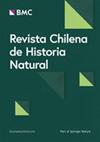阿塔卡马沙漠一种珍稀濒危地植物——卵形毛蕨的有性和无性生殖特征
IF 1.3
4区 环境科学与生态学
Q3 BIODIVERSITY CONSERVATION
引用次数: 2
摘要
“Garra de Leon”(Leontochir ovallei)是智利特有的一种短暂濒危的Alstroemeriaceae物种。尽管为改善该物种的保护做出了许多努力,但在受控条件下刺激休眠种子和产生根茎的方法仍未得到探索。本研究的目的是研究不同离体条件下卵形草种子的萌发反应,并评价其在离体和离体条件下移植后可存活根茎的形成。方法对5种体外种子萌发处理进行评价:(1)酸划伤处理,(2)酸划伤后加曝气水吸胀处理,(3)赤霉素吸胀处理,(4)刀剪种子,(5)种子不做任何处理(对照)。在离体条件下获得的幼苗经过逐渐驯化后移植到离体条件下。8个月后,计算每株根茎的数量。为了测试无性繁殖,用手术刀将每个根茎及其各自的储存器官分开,然后静置两年,然后进行生存能力评估。在这段时间之后,对根茎进行再水化,并在三个月后评估植株的出苗情况。结果处理2的种子发芽率最高(36%),其次是剪皮处理(14%)和硫酸处理(8%)。对照处理的种子发芽率为3%。移植到离体条件后,我们获得220根根茎,平均每株3至6根根茎。休眠2年后,220个根茎中有34个根茎在再水化后恢复了生长,这表明至少有15.5%的根茎对浇水有积极反应。结论强酸性环境能促进卵圆草种子萌发,表明该植物种子休眠的主要方式为物理休眠。而曝气后,萌发率进一步提高,表明胚处于休眠状态。此外,我们还通过离体移栽获得了有活力的根状茎,这可能有助于这种智利稀有地植物的繁殖和迁地保护,也可能有助于其他适应干湿循环环境的地植物物种。本文章由计算机程序翻译,如有差异,请以英文原文为准。
Sexual and asexual reproductive aspects of Leontochir ovallei, a rare and endangered geophyte of the Atacama Desert
Background“Garra de Leon” (Leontochir ovallei) is an ephemeral endangered Alstroemeriaceae species endemic to Chile. Despite many efforts to improve the conservation of this species, the stimulation of dormant seeds and the production of rhizomes under controlled conditions remain unexplored. The aims of this study were to examine the germination responses of L. ovallei seeds under different in vitro conditions and to evaluate the formation of viable rhizomes after transplantation from in vitro to ex vitro conditions.MethodsWe evaluated five in vitro seed germination treatments: (1) acid scarification, (2) acid scarification followed by imbibition of seeds in aerated water, (3) imbibition of seeds in gibberellic acid, (4) clipping of seeds with a scalpel, and (5) seeds without any treatment (control). Seedlings obtained under in vitro conditions were transplanted to ex vitro conditions following a gradual acclimation process. After eight months, the number of rhizomes per plant was counted. To test asexual multiplication, each rhizome with its respective storage organ was divided using a scalpel and then left to rest for two years before subsequent evaluation of viability. After that period, the rhizomes were re-hydrated, and the emergence of plants after three months was evaluated.ResultsSeeds exposed to treatment 2 showed the highest germination percentage (36%), followed by the seeds whose coats were clipped (14%) and seeds treated with sulphuric acid (8%). The seed germination of the control treatment was 3%. After transplantation to ex vitro conditions, we obtained 220 rhizomes, with an average of three to six rhizomes per plant. After two years of dormancy, a total of 34 rhizomes (of 220 rhizomes) reactivated growth after re-ydration, indicating that, at least, 15,5% responded positively to watering.ConclusionsWe found that the seed germination of L. ovallei was increased by strong acidic conditions, suggesting that the main type of seed dormancy in this species is physical. However, germination was further increased by aeration, indicating embryo dormancy. In addition, we were able to obtain viable rhizomes by transplanting seedlings from in vitro to ex vitro conditions, which may be helpful for the propagation and ex situ conservation of this rare geophyte of Chile and potentially other geophyte species adapted to wet-dry cycle environments.
求助全文
通过发布文献求助,成功后即可免费获取论文全文。
去求助
来源期刊

Revista Chilena de Historia Natural
环境科学-生态学
CiteScore
2.50
自引率
18.20%
发文量
9
审稿时长
>36 weeks
期刊介绍:
Revista Chilena de Historia Natural (RCHN) publishes original research dealing with past and present phenomena from organismic to higher levels of biological organization, considering both empirical and theoretical studies on all kinds of taxa and environments.
The major areas covered by RCHN are: botany and zoology; physiological and behavioral ecology; population biology; community and ecosystem ecology; systematics, biogeography and evolution.
 求助内容:
求助内容: 应助结果提醒方式:
应助结果提醒方式:


